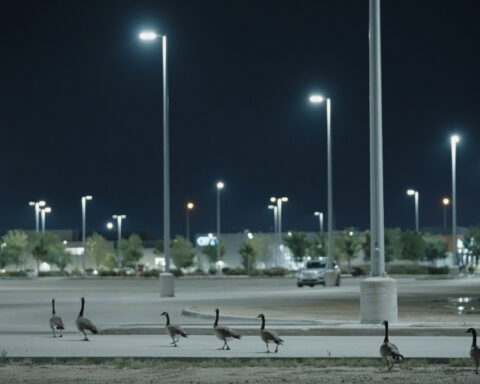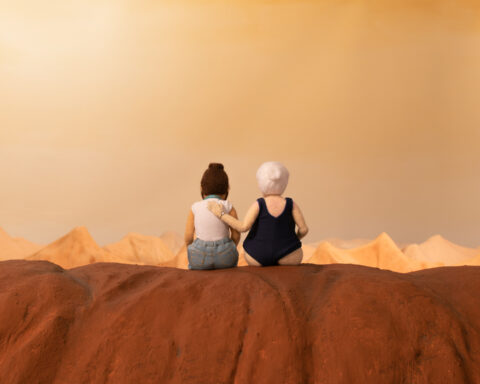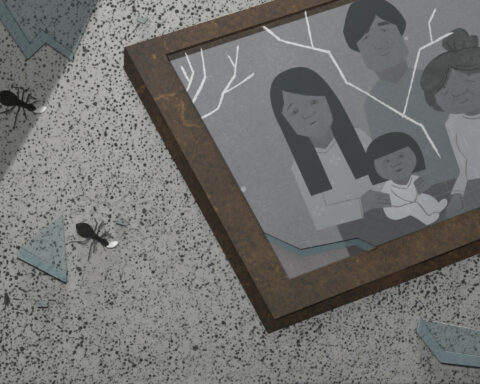Sharmeen Obaid Chinoy and her American co-director Daniel Junge picked up the 2012 Documentary (Short Subject) Oscar for Saving Face, their powerful exposé of horrific acid attacks on women in Pakistan. Wearing a Pakistani designed outfit and custom-made jewellery, Obaid Chinoy exhibited poise and grace when speaking extempore, dedicating the statue “to all the women in Pakistan working for change.” Backstage, she added, “Today Pakistan was in the news for all the right reasons.”
It is the first Oscar win for both internationally acclaimed doc directors, partnering for the first time, and the first Academy nomination, and win, for Pakistan. A lesser-known fact that surfaced in the wake of the Oscars is that Obaid Chinoy’s success resonates for two countries, the second one being Canada, which she calls her adopted homeland.
Born and raised in Karachi, the financial, commercial and educational hub of Pakistan, Sharmeen Obaid was educated at the private, co-ed Karachi Grammar School, which she describes as “one of the best schools in Asia.” She left Pakistan for the U.S. to earn a bachelor’s degree at Smith College and two master’s degrees at Stanford University, and then in 2004 married her longtime Pakistani-Canadian sweetheart, investment banker Fahd Chinoy. Joining him at his Toronto-area home, she adjusted her name to Obaid Chinoy and her citizenship to Pakistani-Canadian.
For the next six years, Obaid Chinoy worked out of Toronto, setting up a film company and crewing with Canadians from the Yukon to Toronto. She created several international documentaries for PBS’s Frontline and Channel 4 in the U.K., and also made her only Canadian-themed film to date, Highway of Tears (2006), on the disappearance of up to 32 women, mainly First Nations, along Highway 16 in British Columbia. When the CBC didn’t respond to her proposal and she found NFB paperwork too cumbersome for the urgency of the story, she sent out 40 proposals, and secured funding from Al Jazeera International.
“Never take no for an answer. You must seek out opportunity because rarely does it seek you out.” — Sharmeen Obaid Chinoy
If Obaid Chinoy had taken “no” for an answer easily she may not have risen as one of the world’s leading documentarians. When her father, a wealthy self-made textile businessman, wanted her to attend university in Pakistan, she challenged him by going on a hunger strike until he relented and let her go to the United States. After working in print journalism in Karachi and during her undergraduate years, she realized people would understand the Muslim world better by making it visual. With no film experience, she contacted 80 companies to fund her first documentary before finally convincing New York Times Television to invest by promising to pay everything back if she didn’t succeed. She was 22 and still in university when she made her first award-winning documentary Terror’s Children (2002).
By comparison, the making of Saving Face came easily but the subject proved as challenging as her previous films on disenfranchised women in Pakistan, Afghanistan, Saudi Arabia and Canada.
She remembers Junge’s phone call from Colorado to her Karachi office. He had secured financing from HBO, established a relationship with Pakistani-British plastic surgeon Dr. Mohammed Jawal and conducted the first shoot in Pakistan. He realized he needed a partner. “It’s a remarkable story,” he told her. She knew about acid crimes and needed no convincing. As they finished their conversation she dived into the project. They wouldn’t meet each other until many months later but that first call had assured them both that they shared the same vision.
Filming took place in Pakistan for 18 months and editing happened simultaneously in the U.S. The way into the story is through the charismatic and outwardly sympathetic central figure of Dr. Jawal, who returns to his homeland and volunteers to give reconstructive help to disfigured victims of acid crimes. Two of his patients are the film’s focus of facial restoration and restored dignity.
The most horrific case shown in the film is Zakia’s. She hides behind her burqa after half her face is melted by battery acid thrown by her husband, Pervez, when she applies for a divorce to end years of abuse. He appears briefly in the film, just enough for the viewer to see through his lies as he denies doing it. Dr. Jawal reconstructs her face and oversees a prosthetic to replace her missing eye. Female parliamentarians and lawyers fight for justice in her case and eventually win a tougher law to punish perpetrators and to give a double life sentence to her husband. Along with the judicial satisfaction, Zakia gains enough confidence upon seeing her saved face to walk through the streets of Pakistan without her burqa. Her transformation is monumental.
Rukhsana feels helpless to escape her abusive marriage because of poverty. Even after her husband throws acid on her, and his family douses her in gasoline and lights her on fire, she still lives with them, in the same small house where memories haunt her. Scheduled reconstruction that she looks forward to gets delayed by an unexpected pregnancy. We never see her face saved by Dr. Jawal, only the promise of joy her newborn son brings her and the doctor’s promise that he will take care of her reconstruction on a future trip.
The filmmakers elevate their topic of utter despair to one of hope by showing the humanity of people helping each other—enablers helping victims.
Toward the end of the film, Dr. Jawal reflects on the work he’s doing: “In a way I’m saving my own face, because I’m part of this society that has this disease.” Obaid Chinoy tells me that for her, “It’s also about saving Pakistan’s face. It shows Pakistan working to solve some of its problems.” She is under no false impression that the 150 or more acid attacks in Pakistan each year will stop anytime soon but at least people are talking about the issue, and that’s her goal. She hopes to take the film to schools and community screenings in Pakistan, to keep the dialogue going. She is also insistent that “for Pakistan to move forward with some of its problems, it’s necessary for the educated Pakistanis to come back and share their knowledge and experiences, and give back to their country.”
“The destination of your dreams already exists out there but you need to chase it.” — Sharmeen Obaid Chinoy
As a young girl, Obaid Chinoy admired CNN news correspondent Christiane Amanpour and became determined that she too would be a journalist. “To see an Iranian woman succeeding on television inspired me to follow my dreams,” she says. Since realizing her career dream, as a journalist, investigative reporter and documentary filmmaker, she has become driven to give voice to underrepresented women and children globally, and tackle difficult human rights issues that are rarely spoken about. “It is my passion to bring the voices of women, children, refugees and minorities from one part of the world to another.”
In 11 years she has made 16 television films screened on PBS, CBC, HBO, Discovery Times, Channel 4, CNN, Arte and Al Jazeera. She won numerous awards prior to the Oscar, including a Toronto YWCA Woman of Distinction and an International Emmy for Pakistan’s Taliban Generation: Children of the Taliban (2009). The Toronto Star singled her out as one of the Top Ten People to Watch in 2007, and she was selected as one of 11 rising young leaders from Asia by the Asia Society in 2011.
Obaid Chinoy splits her time between Toronto and Karachi. She has set up a sister company to her Toronto production office in Karachi, and is raising her young Canadian-born daughter there. She is developing a children’s series for Pakistani television, talking with the NFB about a project, promoting her recent film Transgenders: Pakistan’s Open Secret (2011), showing Saving Face and collecting stories for a double-volume book on Pakistan’s cultural history. Obaid Chinoy shows no sign of slowing down since being singled out as one of the people to watch five years ago, last year and again this year.











